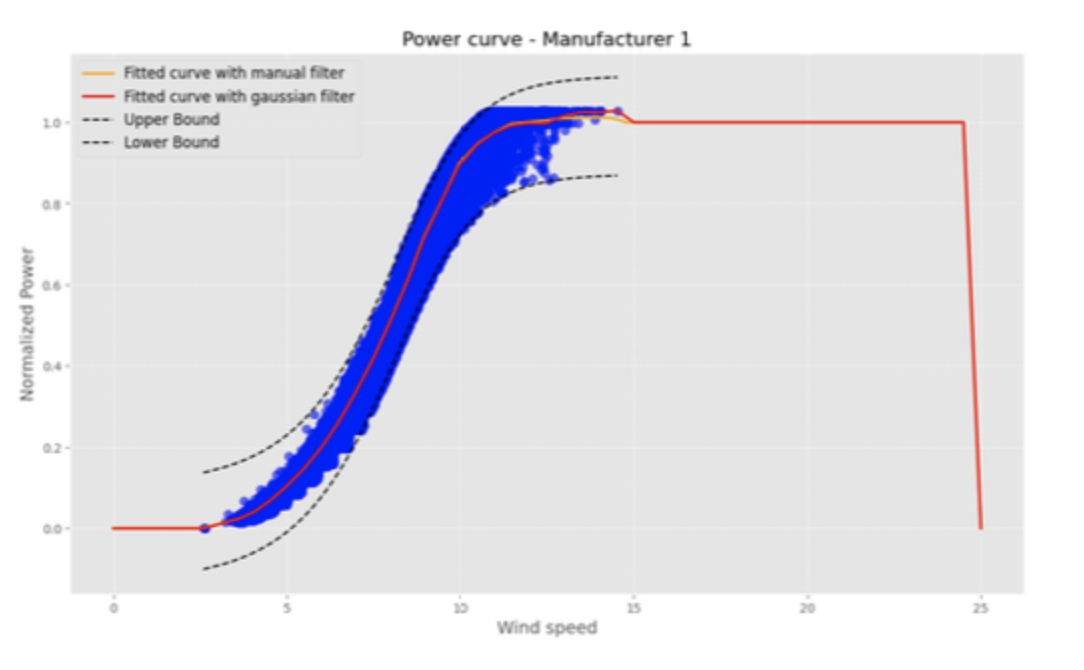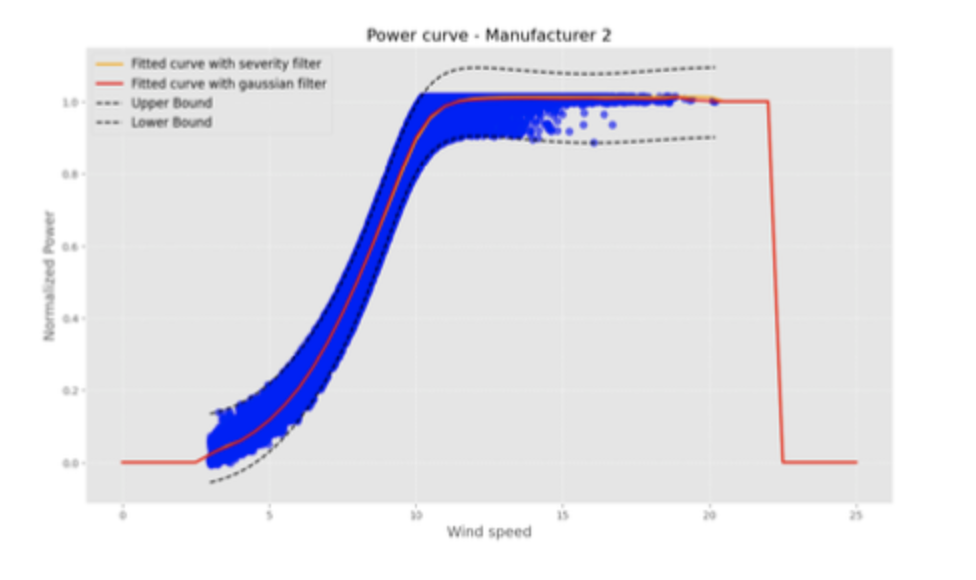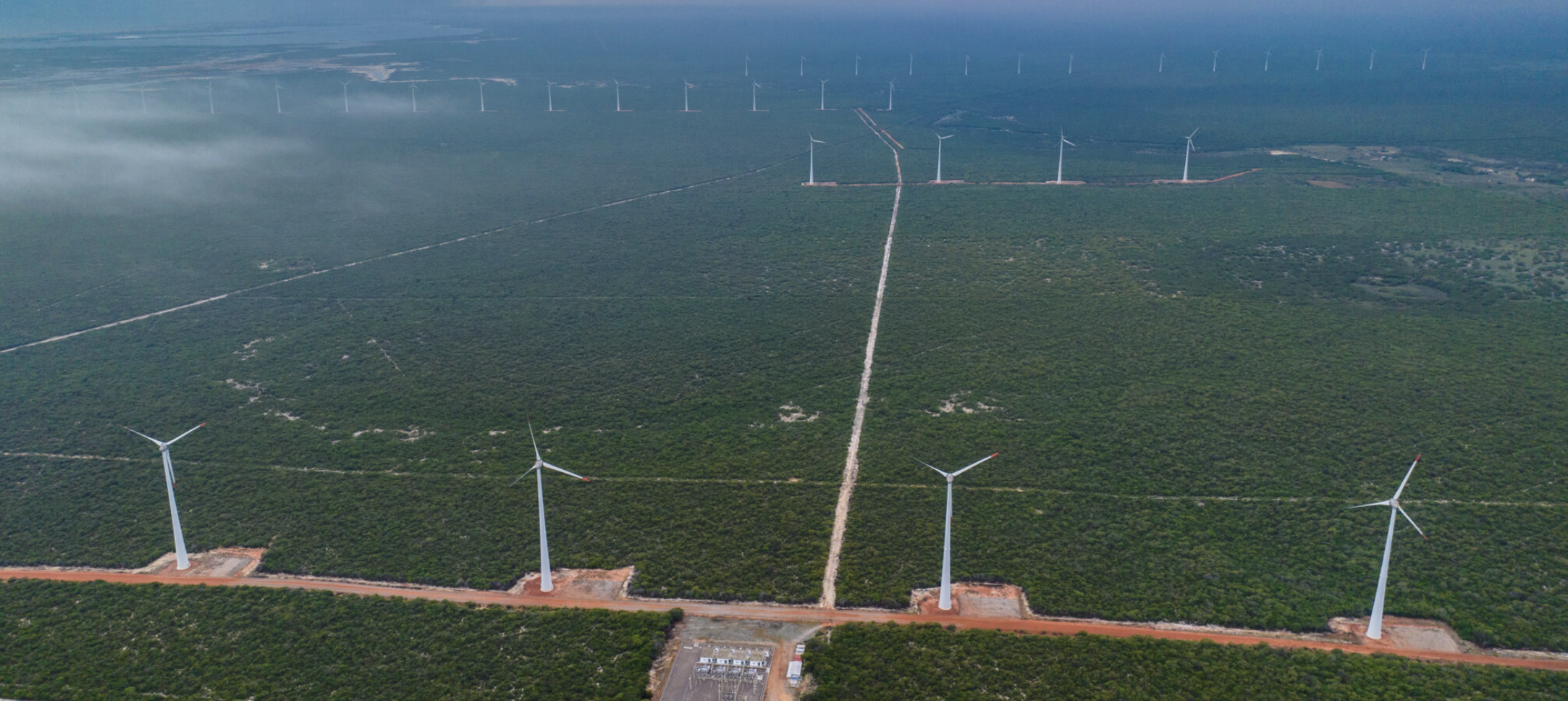Automating Wind Turbine Data Cleaning with Machine Learning

Data cleaning may seem like an invisible task in the renewable energy world, but that's precisely where efficiency begins. In this study by Delfos Energy, researchers demonstrate how applying machine learning to wind turbine power curve modeling can eliminate manual work, making the process far more scalable and accurate.
The Problem: Dirty Data and Manual Inefficiency
To understand a wind turbine’s actual performance, one must analyze its power curve—the relationship between wind speed and energy production. However, data collected by SCADA systems often comes with noise, operational failures, technical limitations, or even sensor errors. And event logs are not always available or reliable.
In practice, this forces many teams to manually filter the data to remove anomalies before modeling the power curve. As you can imagine, this process is slow, subjective, and not scalable.
The Innovation: Gaussian Process as a Smart Filter
The study’s proposal is simple yet powerful: use Gaussian Process (GP), a Bayesian machine learning algorithm (a probabilistic classifier based on Bayes' Theorem), to intelligently automate this data cleaning process.
Instead of relying on manual logs or event records, GP is trained to identify normal operational patterns of the turbine. It learns from the data itself—detecting outliers and removing anomalies with high precision.
What’s more, it does all this without distorting the final outcome, as proven by comparing AEP (Annual Energy Production) values across different filtering methods.
The Result: Efficiency and Scalability
Two experiments were conducted:
- In the first, the authors showed that the Gaussian Process-based filter produced AEP results almost identical to traditional manual filtering—with only a 0.29% difference.

- In the second, GP was compared to a filter based on severity logs (when available), and once again the result was very close, with only a -0.25% difference.

In both cases, Delfos’ approach proved that it is possible to automate data cleaning without compromising the final model’s accuracy. This marks a major leap forward for teams aiming for standardized and agile performance analysis.
Why Does This Matter?
This innovation reinforces Delfos’ commitment to technical excellence and the automation of critical processes in the renewable energy sector. By eliminating manual and subjective steps, we pave the way for more robust, reliable, and replicable analysis—essential ingredients for the global energy transition.
For our clients and partners, this translates into more confident decision-making, reduced rework, and a smarter platform every day.
Want to see the full technical paper?
Fill in the form below and access the full paper published by our R&D team and understand all the technical details behind this innovation.
Study published by Osmar Alexandre, Rodrigo Queiroz and Gustavo Carvalho from Delfos Energy and submitted to Brazil Windpower 2024.
Book a meeting
Let's connect and forge new partnerships
Custom Renewable Energy Solutions
Contact us today and join global operators who recovered up to 10% revenue and cut downtime by 18%

